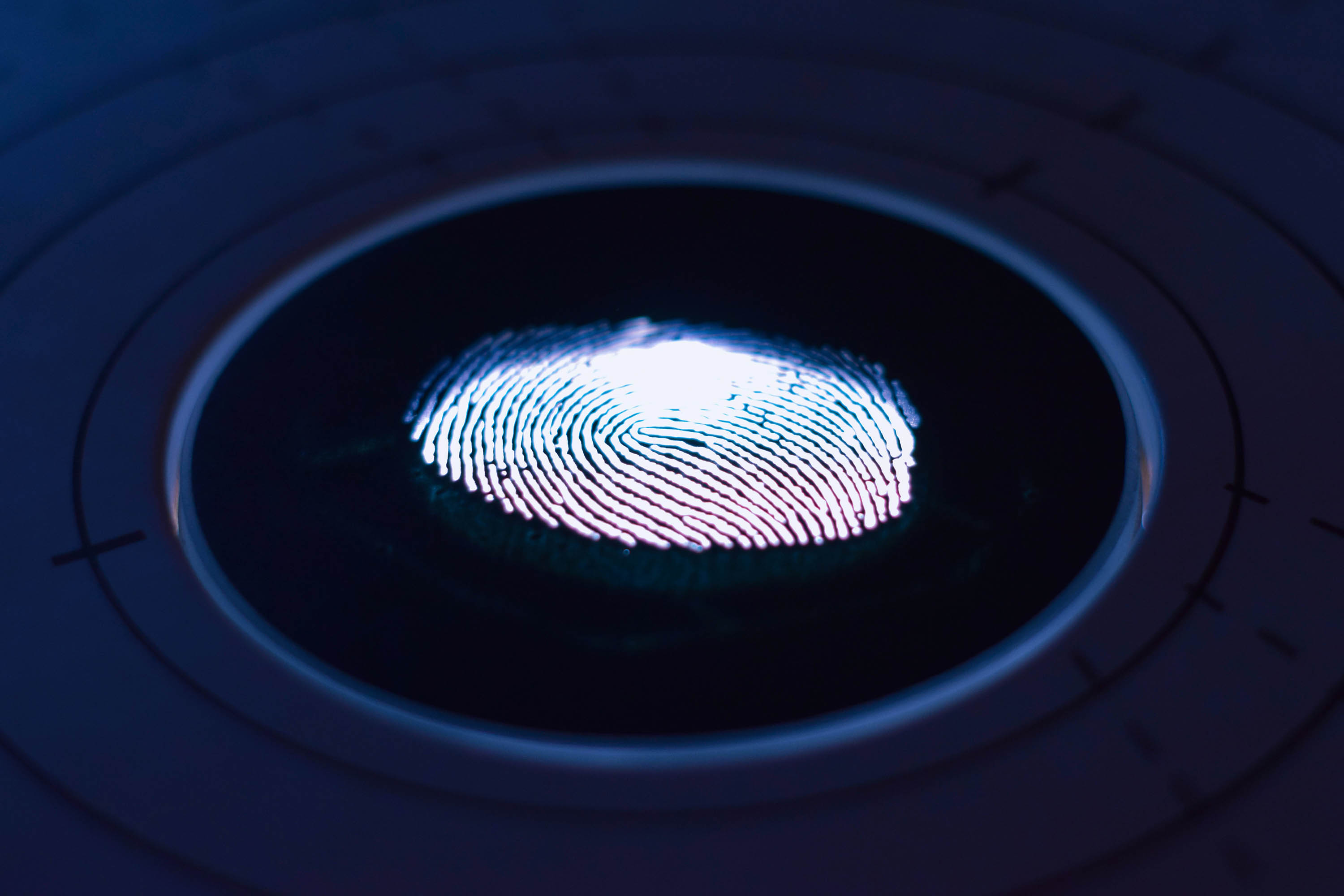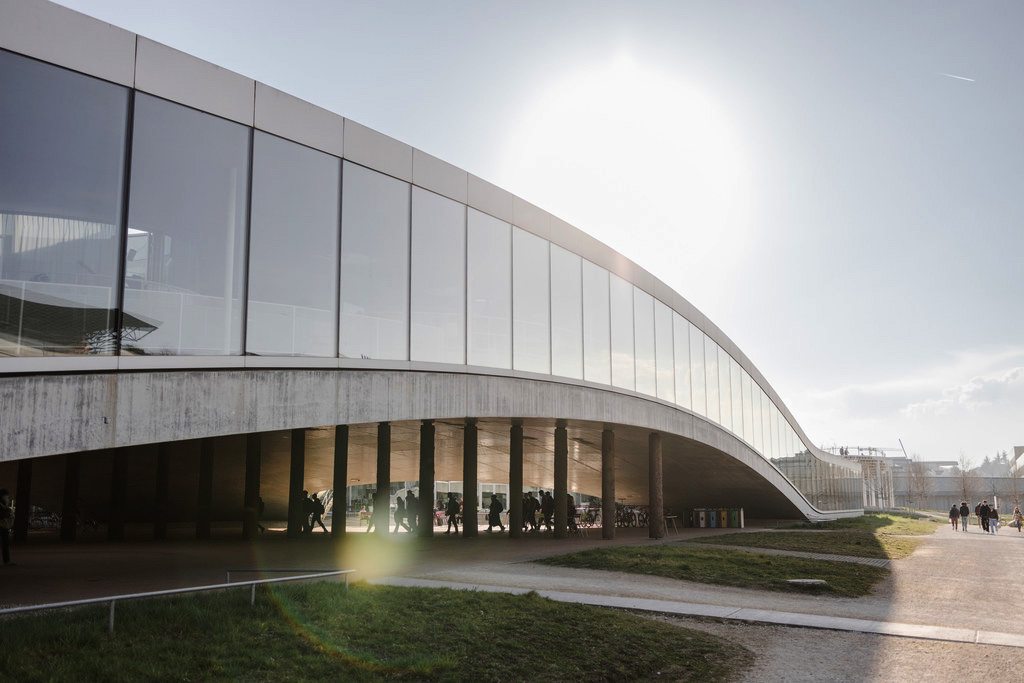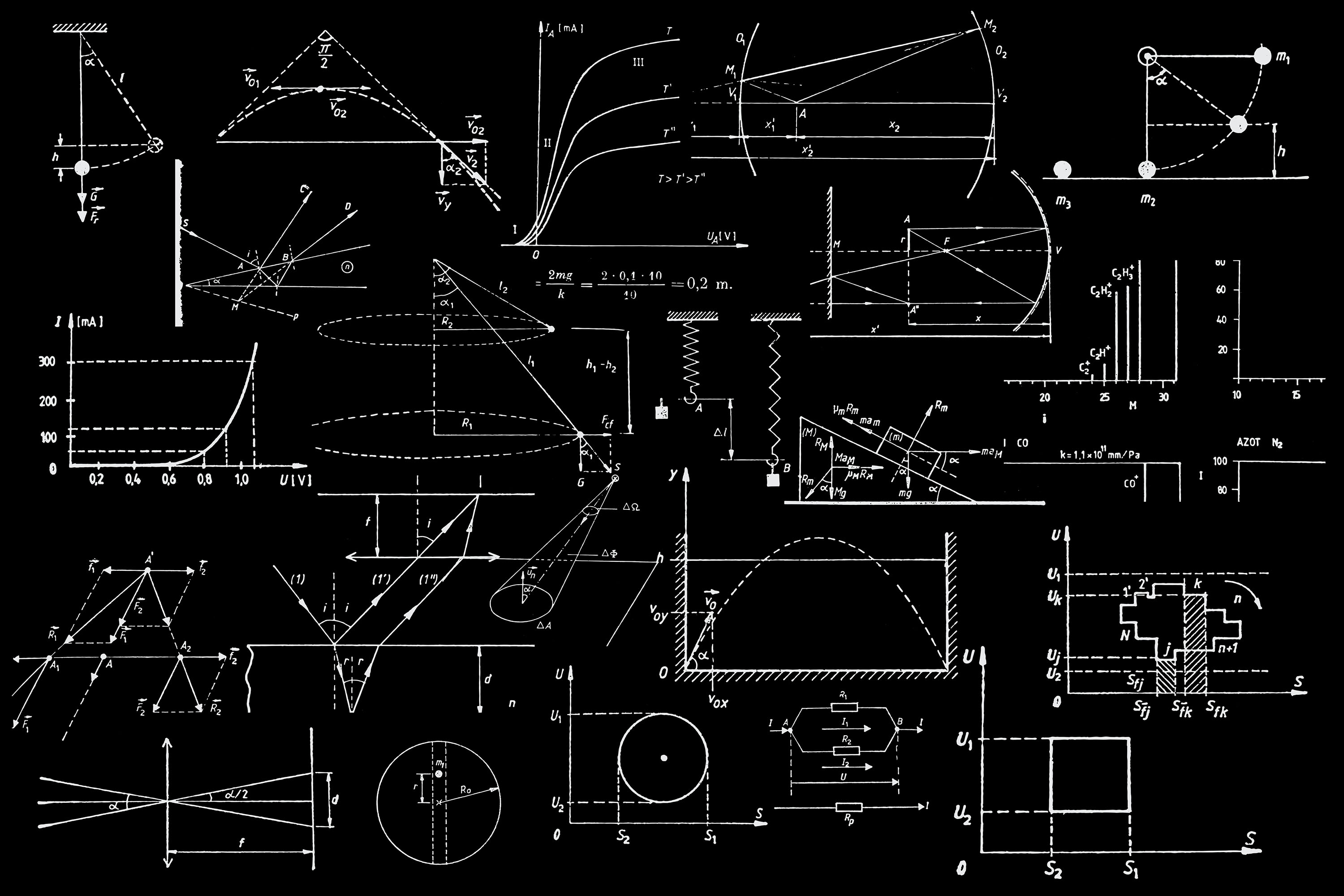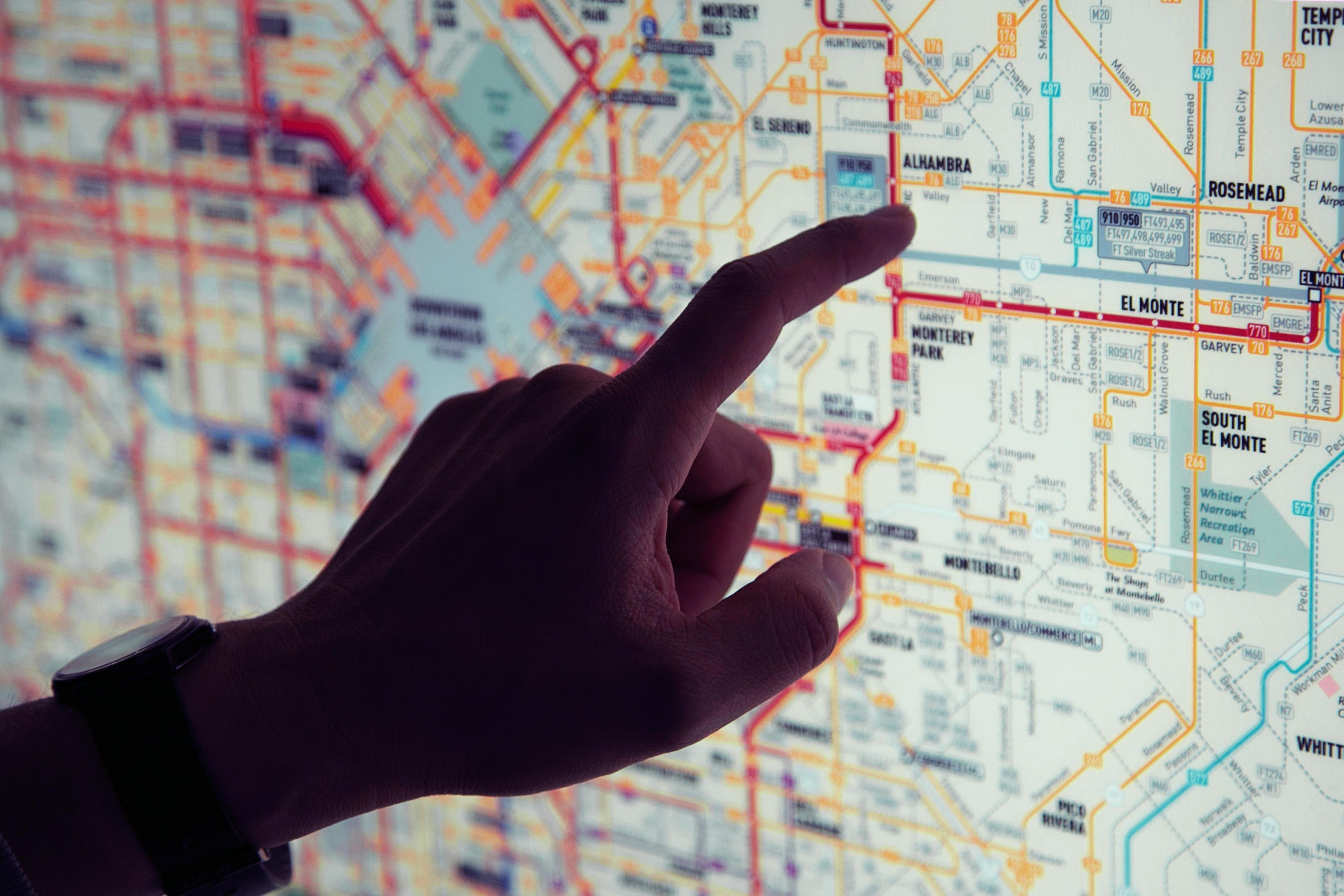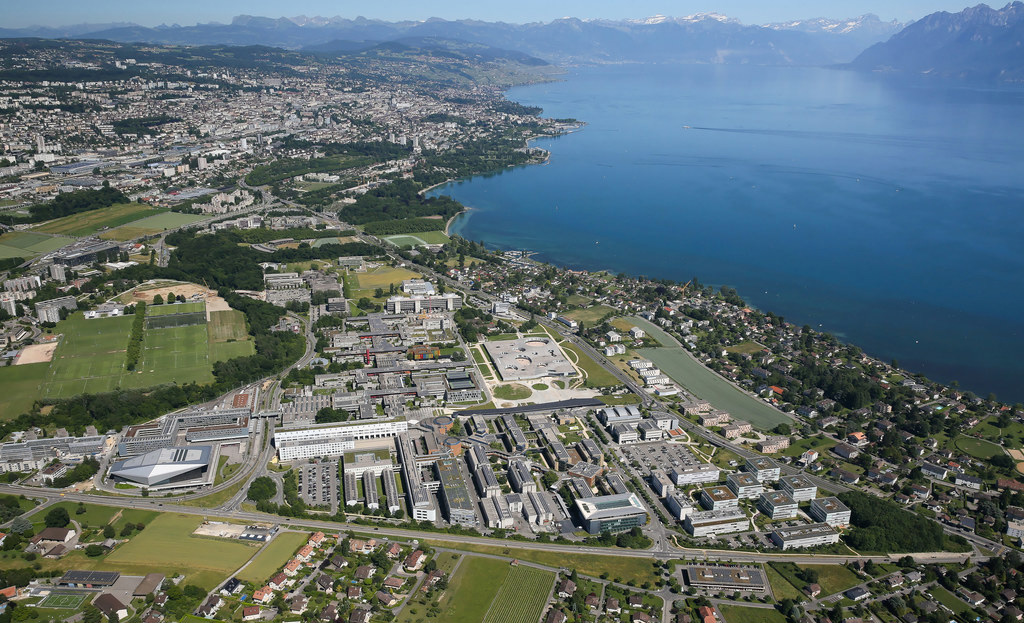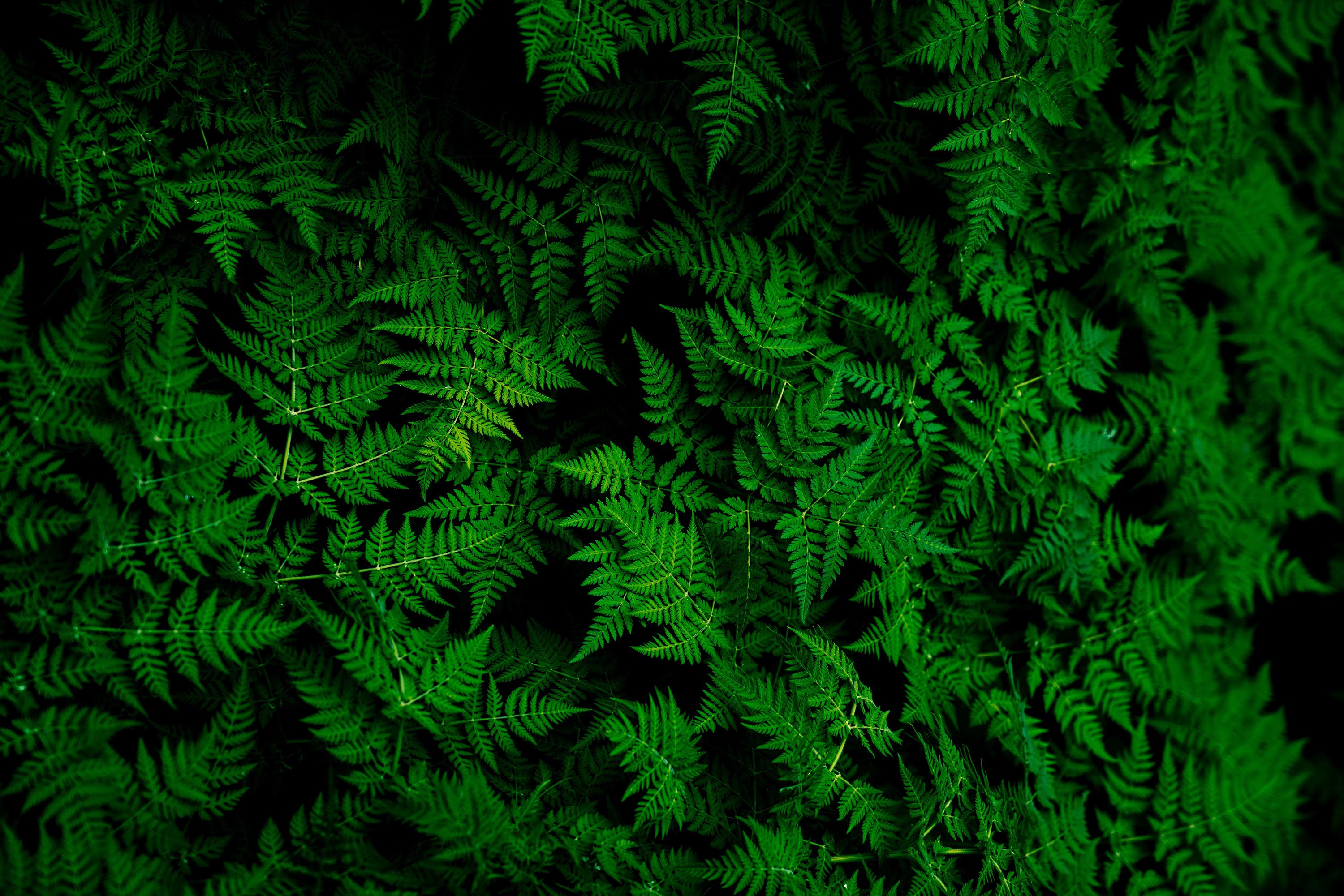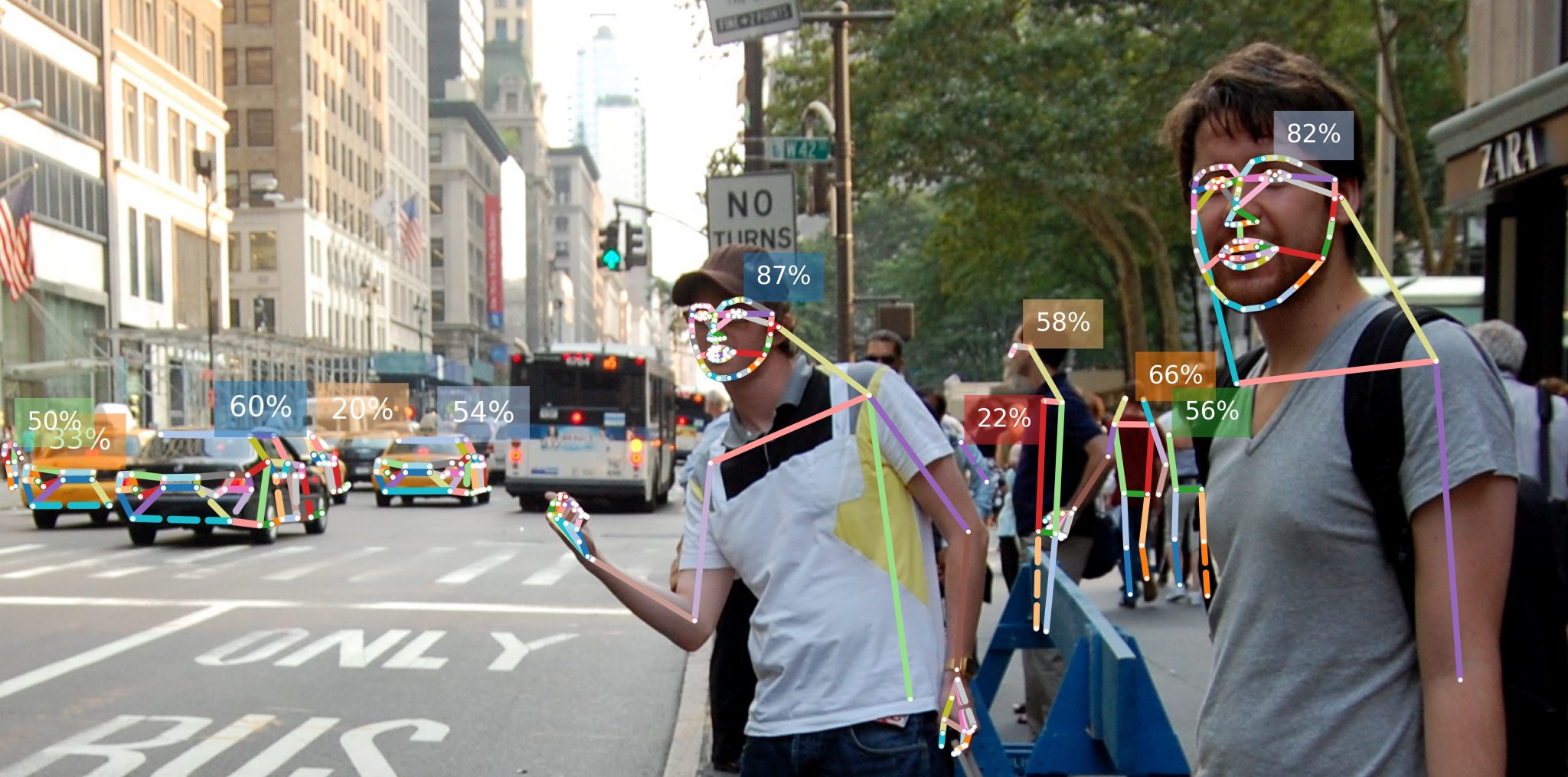<div class="bleu"><br />
<img class="topLogo" src="<?= $path."epfl.png" ?>"><br />
<div class="code"><br />
<?= htmlentities( file_get_contents($path."code.txt")) ?><br />
</div><br />
<div class="caroussel caroussel1"><br />
<?php foreach (glob($path."intro/*.{jpg,png,gif,JPG,PNG,GIF}", GLOB_BRACE) as $img) { ?><br />
<img id="introImg" src="<?= $img ?>"><br />
<?php } ?><br />
</div><br />
</div><br />
<br />
<div id="menu"><br />
<a class="menuItem menuNotreMenu" href="#notreMenu">Menu</a><br />
<a class="menuItem menuVie" href="#vie"><span>Vie du </span>café</a><br />
<a href="#body" class="title"><br />
<h1>CoursTuring</h1><br />
</a><br />
<a class="menuItem menuInfo" href="#info">Infos<span> pratiques</span></a><br />
<a class="menuItem menuProjet" href="#projet"><span>Le </span>projet</a><br />
<br />
<div class="lineMenu"></div><br />
<div class="fondMenu"></div><br />
</div><br />
<br />
<div class="intro" id="intro"><br />
<div class="introText"><br />
<h2>Un Café <br> pas tout à fait <br> comme <br> les autres</h2><br />
<p class="center"><br />
<?php echo = file_get_contents( 'intro-txt.txt'); ?><br />
</p><br />
</div><br />
</div><br />
<br />
<div class="notreMenu" id="notreMenu"><br />
<div class="notreMenuTop"><br />
<div class="notreMenuTitre"><h2>notre<br><span>menu</span></h2></div><br />
<div class="caroussel caroussel2"><br />
<?php foreach (glob($path."menu/*.{jpg,png,gif,JPG,PNG,GIF}", GLOB_BRACE) as $img) { ?><br />
<img class="menuImg" src="<?= $img ?>"><br />
<?php } ?><br />
</div><br />
</div><br />
<div class="notreMenuBottom"><br />
<h3><br />
<?php $content = fopen($path.'menu-titre.txt','r'); echo stream_get_contents($content); fclose($content); ?><br />
</h3><br />
<p class=""><br />
<?php $content = fopen($path.'menu-txt.txt','r'); echo stream_get_contents($content); fclose($content); ?><br />
</p><br />
<a href="<?php echo $path.'menu.pdf' ?>" target="_blank"><span class="point2">●</span><div class="menuLeg">Découvrir la carte</div><!-- <span class="picto1">▤</span> --></a><br />
</div><br />
</div><br />
<br />
<div class="vieCafe" id="vie"><br />
<?php<br />
$imgs = glob( $path."vie/*.{jpg,png,gif,JPG,PNG,GIF}", GLOB_BRACE);<br />
$txts = glob( $path."vie-txt*.txt", GLOB_BRACE);<br />
$legs = file( $path."vie-legends.txt" );<br />
$urls = file( $path."vie-url.txt");<br />
<br />
for ($i=0; $i < 4; $i++) {<br />
if( sizeof($imgs) > $i*3 ) echo '<img class="vie'.($i*3 ).'" src="'.$imgs[$i*3].'">';<br />
if( sizeof($imgs) > $i*3+1 ) echo '<img class="vie'.($i*3+1).'" src="'.$imgs[$i*3+1].'">';<br />
if( sizeof($imgs) > $i*3+2 ) echo '<img class="vie'.($i*3+2).'" src="'.$imgs[$i*3+2].'">';<br />
if( sizeof($txts) > $i ) echo '<div class="vieContainer'.($i%2).'">';<br />
if( sizeof($txts) > $i ) echo '<div class="vietxt">'.nl2br(file_get_contents($txts[$i])).'</div>';<br />
if( sizeof($legs) > $i ) echo '<div class="vieLeg">';<br />
<br />
if( sizeof($urls) > $i && trim($urls[$i]) !== "" ) // double negation !== false ...<br />
echo '<a href="'.((strpos($urls[$i], "http") !== false) ? $urls[$i] : 'http://'.$urls[$i] ).'" target="_blank">';<br />
if( sizeof($legs) > $i && trim($urls[$i]) !== "" )echo '<span class="point2">●</span>';<br />
if( sizeof($legs) > $i ) echo '<div class="vieLien">'.$legs[$i].'</div>'.'</div>';<br />
if( sizeof($urls) > $i && trim($urls[$i]) !== "" )echo '</a>';<br />
if( sizeof($txts) > $i ) echo '</div>';<br />
}<br />
?><br />
</div><br />
<br />
<div class="separateur"></div><br />
<br />
<div class="infos" id="info"><br />
<div class="infosLeft"><br />
<a href="https://www.openstreetmap.org/?mlat=48.85755&mlon=2.36677#map=13/48.8536/2.3673" target="_blank" class="infosCarte"><br />
<img class="filtreBleu" src="<?=$app->config('assets.path')?>/img/Map_NC.png"><br />
<!-- <iframe width="425" height="350" frameborder="0" scrolling="no" marginheight="0" marginwidth="0" src="https://www.openstreetmap.org/export/embed.html?bbox=2.3633265495300297%2C48.85538341572399%2C2.370407581329346%2C48.85852111615461&layer=mapnik&marker=48.85737847242929%2C2.366582751274109&zoom=1" style="position: absolute; mix-blend-mode: luminosity;"></iframe><br/>--><br />
</a><br />
<br />
<div class="infosText"><br />
<p><span class="point">●</span>NOTRE CAFÉ, PARIS LE MARAIS</p><br><br />
<p>11 allée Arnaud Beltrame 75003 Paris</p><br><br />
<p class="transports">Métro ➑ // Bus <span>➋➒</span></p><br><br />
<div class="réseaux"><br />
<a href="https://www.instagram.com/notrecafemarais/" target="_blank"> <div class="picto2">♥</div><p>Suivez nous sur Instagram</p></a><br />
<!-- <br> --><br />
<!-- <a href="https://www.spotify.com/" target="_blank"><div class="picto2">♫</div><p>Écoutez les playlists du café</p></a> --><br />
</div><br />
<br />
"content-hash": "343197bf4bde1202b4e9e5cad2eaa54c",<br />
"packages": [<br />
{<br />
"name": "slim/extras",<br />
"version": "2.0.3",<br />
"target-dir": "Slim/Extras",<br />
"source": {<br />
"type": "git",<br />
"url": "https://github.com/codeguy/Slim-Extras.git",<br />
"reference": "a022ed23dae94e164000acd891e3394d903f9623"<br />
},<br />
"dist": {<br />
"type": "zip",<br />
"url": "https://api.github.com/repos/codeguy/Slim-Extras/zipball/a022ed23dae94e164000acd891e3394d903f9623",<br />
"reference": "a022ed23dae94e164000acd891e3394d903f9623",<br />
"shasum": ""<br />
},<br />
"require": {<br />
"php": ">=5.3.0",<br />
"slim/slim": ">=2.0.0"<br />
},<br />
"type": "library",<br />
"autoload": {<br />
"psr-0": {<br />
"Twig_Extensions_": "Views/Extension/",<br />
"Slim\\Extras": "."<br />
}<br />
},<br />
"notification-url": "https://packagist.org/downloads/",<br />
"license": [<br />
"MIT"<br />
],<br />
"authors": [<br />
{<br />
"name": "Andrew Smith",<br />
"email": "a.smith@silentworks.co.uk",<br />
"homepage": "http://www.silentworks.co.uk/"<br />
},<br />
{<br />
"name": "Josh Lockhart",<br />
"email": "info@joshlockhart.com",<br />
"homepage": "http://www.joshlockhart.com/"<br />
}<br />
],<br />
"description": "Extras package for the Slim Framework",<br />
"homepage": "http://github.com/codeguy/Slim-Extras",<br />
"keywords": [<br />
"extensions",<br />
"middleware",<br />
"templating"<br />
],<br />
"time": "2013-01-07T17:56:10+00:00"<br />
},<br />
{<br />
"name": "slim/slim",<br />
"version": "2.6.3",<br />
"source": {<br />
"type": "git",<br />
"url": "https://github.com/slimphp/Slim.git",<br />
"reference": "9224ed81ac1c412881e8d762755e3d76ebf580c0"<br />
},<br />
"dist": {<br />
"type": "zip",<br />
"url": "https://api.github.com/repos/slimphp/Slim/zipball/9224ed81ac1c412881e8d762755e3d76ebf580c0",<br />
"reference": "9224ed81ac1c412881e8d762755e3d76ebf580c0",<br />
"shasum": ""<br />
},<br />
"require": {<br />
"php": ">=5.3.0"<br />
},<br />
"suggest": {<br />
"ext-mcrypt": "Required for HTTP cookie encryption",<br />
"phpseclib/mcrypt_compat": "Polyfil for mcrypt extension"<br />
},<br />
"type": "library",<br />
"autoload": {<br />
"psr-0": {<br />
"Slim": "."<br />
}<br />
},<br />
"notification-url": "https://packagist.org/downloads/",<br />
"license": [<br />
"MIT"<br />
],<br />
"authors": [<br />
{<br />
"name": "Josh Lockhart",<br />
"email": "info@joshlockhart.com",<br />
"homepage": "http://www.joshlockhart.com/"<br />
}<br />
],<br />
"description": "Slim Framework, a PHP micro framework",<br />
"homepage": "http://github.com/codeguy/Slim",<br />
"keywords": [<br />
"microframework",<br />
"rest",<br />
"router"<br />
],<br />
"time": "2017-01-07T12:21:41+00:00"<br />
}<br />
],<br />
"packages-dev": [],<br />
"aliases": [],<br />
"minimum-stability": "stable",<br />
"stability-flags": [],<br />
"prefer-stable": false,<br />
"prefer-lowest": false,<br />
"platform": [],<br />
"platform-dev": []<br />
}<br />
.bleu{<br />
width: 100%;<br />
background-color: #0083ae;<br />
}<br />
.bleu.header{ height: 60vh; }<br />
.code{<br />
font-family: "flow circular";<br />
font-size: 0.3em;<br />
}<br />
.header pre{<br />
margin-top: 4.4em;<br />
padding-left: 34vw;<br />
margin-left: -42em;<br />
}<br />
<br />
<?php<br />
if(!empty($_POST)) echo '<div class="messageadmin">';<br />
<br />
if (!empty($_POST['article'])) {<br />
$path = './articles/';<br />
$id = $_POST['article-id'];<br />
$pathId = $path . $_POST['article-id'];<br />
<br />
// ========== article .imgs ===================================================<br />
if ( isset($_FILES['image0']) || isset($_POST['image-name-0']) ) {<br />
foreach(glob($pathId. "/img*") as $name) { rename( $name, $pathId."/tmp---".basename($name) ); }<br />
if ( !is_dir($pathId) ) mkdir($pathId); // create folder<br />
for ($i=0; $i < 29 ; $i++) {<br />
if (isset($_FILES['image'.$i]) AND $_FILES['image'.$i]['error'] == 0) { // upload img<br />
if ($_FILES['image'.$i]['size'] <= 1300000) {<br />
$extension_upload = pathinfo($_FILES['image'.$i]['name'])['extension'];<br />
if (in_array($extension_upload, array('jpg','png','gif','JPG','PNG','GIF') )) {<br />
move_uploaded_file( $_FILES['image'.$i]['tmp_name'], $pathId.'/img'.$i.'.'.$extension_upload );<br />
} else { echo "Mauvais format d'image, format autorisé : .jpg, .png, .gif "; break; }<br />
} else { echo "Image trop volumineuse, taille maximale : 1 Mo par image "; break; }<br />
} else if ( isset($_FILES['image'.$i]) AND $_FILES['image'.$i]['error'] != 0 ){ break; }<br />
if( isset($_POST['image-name-'.$i]) ){ // rename img<br />
rename($pathId.'/tmp---'.$_POST['image-name-'.$i], $pathId.'/img'.$i.'.'.pathinfo($_POST['image-name-'.$i], PATHINFO_EXTENSION) );<br />
}<br />
}<br />
array_map( 'unlink', array_filter((array) glob($pathId. "/tmp---*") ) ); // delete existing files if new img<br />
}<br />
<br />
// ========== article .txt =========================================================<br />
<br />
if (isset($_POST['text' ])){ $content = fopen ( $path.'/'.$id.'-txt.txt', 'w'); fwrite ( $content, $_POST['text'] ); fclose ( $content ); }<br />
if (isset($_POST['titre'])){ $content = fopen ( $path.'/'.$id.'-titre.txt', 'w'); fwrite ( $content, $_POST['titre'] ); fclose ( $content ); }<br />
if (isset($_POST['tel' ])){ $content = fopen ( $path.'/'.$id.'-num.txt', 'w'); fwrite ( $content, $_POST['tel'] ); fclose ( $content ); }<br />
if (isset($_POST['url' ])){ $content = fopen ( $path.'/'.$id.'-url.txt', 'w'); fwrite ( $content, $_POST['url'] ); fclose ( $content ); }<br />
if (isset($_POST['urltxt'])){ $content = fopen ( $path.'/'.$id.'-urltxt.txt', 'w'); fwrite ( $content, $_POST['urltxt'] ); fclose ( $content ); }<br />
if (isset($_POST['credits'])){ $content = fopen ( $path.'/credits.txt', 'w'); fwrite ( $content, $_POST['credits'] ); fclose ( $content ); }<br />
<br />
if (isset($_POST['leg0' ])){<br />
$leg = "";<br />
$url = "";<br />
for ($i=0; $i < 4; $i++) {<br />
$file = fopen ( $path.'/vie-txt'.$i.'.txt', 'w'); fwrite ( $file, $_POST['text'.$i] ); fclose ($file);<br />
$leg .= $_POST['leg'.$i] .PHP_EOL;<br />
$url .= $_POST['url'.$i] .PHP_EOL;<br />
}<br />
$file = fopen ( $path.'/vie-url.txt', 'w'); fwrite ( $file, $url ); fclose ($file);<br />
$file = fopen ( $path.'/vie-legends.txt', 'w'); fwrite ( $file, $leg ); fclose ($file);<br />
}<br />
<br />
// ========== article .pdf =========================================================<br />
if (isset($_FILES['pdf']) AND $_FILES['pdf']['error'] == 0) {<br />
if ($_FILES['pdf']['size'] <= 4300000) {<br />
$extension_upload = pathinfo($_FILES['pdf']['name'])['extension'];<br />
if (in_array($extension_upload, array('pdf','pdf') )) {<br />
array_map( 'unlink', array_filter((array) glob($path. "/menu.*") ) ); // delete existing files if new img<br />
move_uploaded_file( $_FILES['pdf']['tmp_name'], $path.'/menu.'.$extension_upload );<br />
} else { echo "<p>Mauvais format d'image, format autorisé : .pdf</p>"; }<br />
} else { echo "<p>Pdf trop volumineuse, taille maximale : 3 Mo </p>"; }<br />
}<br />
<br />
echo '<script> jQuery(document).ready(function($){ $(document).scrollTop( '.$_POST['scrollTop'].' ); });</script>';<br />
echo $id." enregistrée.";<br />
}<br />
<br />
<br />
if (isset($_FILES['pdf']) AND $_FILES['pdf']['error'] == 0) {<br />
if ($_FILES['pdf']['size'] <= 4300000) {<br />
$extension_upload = pathinfo($_FILES['pdf']['name'])['extension'];<br />
if (in_array($extension_upload, array('pdf','pdf') )) {<br />
array_map( 'unlink', array_filter((array) glob($path. "/menu.*") ) ); // delete existing files if new img<br />
move_uploaded_file( $_FILES['pdf']['tmp_name'], $path.'/menu.'.$extension_upload );<br />
} else { echo "<p>Mauvais format d'image, format autorisé : .pdf</p>"; }<br />
} else { echo "<p>Pdf trop volumineuse, taille maximale : 3 Mo </p>"; }<br />
}<br />
<br />
echo '<script> jQuery(document).ready(function($){ $(document).scrollTop( '.$_POST['scrollTop'].' ); });</script>';<br />
echo $id." enregistrée.";<br />
}<br />
<br />
<br />
<br />
<br />
if(!empty($_POST)) echo '</div>';<br />
?><br />
<?php include "header.php"; ?><br />
<?php include "admin-process.php"; ?><br />
<br />
<LINK rel="stylesheet" type="text/css" href="<?= $app->config('assets.path'); ?>/admin.css"><br />
<script src="<?= $app->config('assets.path'); ?>/lib-js/jquery-markdown.js"></script><br />
<script src="<?= $app->config('assets.path'); ?>/lib-js/sortable.min.js"></script><br />
<script src="<?= $app->config('assets.path'); ?>/admin.js"></script><br />
<br />
<!-- =============== intro ============================================ --><br />
<br />
<h2>Intro</h2><br />
<br> <br> <br><br />
<?php $path = $app->config('articles.path')."/"; ?><br />
<form action="" method="post" enctype="multipart/form-data" style="display:block"><br />
Images d'accueil <i>30 images maximum</i> <br /><br />
<div class="sortable"><br />
<?php<br />
$list = glob($path."intro/*.{[jJ][pP][gG],[pP][nN][gG],[gG][iI][fF]}", GLOB_BRACE); natsort($list);<br />
foreach ($list as $img) { ?><br />
<div class="inline modifImgContainer"><br />
<img class='modifImg' src='<?=$img.'?'.time()?>'><br />
<button class="supprimer-image">X</button><br />
<input type="hidden" class="image-name" name="image-name-?" id="image-name-?" value="<?=basename($img)?>" /><br />
</div><br />
<?php } ?><br />
<div class="inline modifImgContainer nonDraggable"><br />
<p>Ajouter une image :<br><i>Poid maximum par image 1 Mo</i> </p><br />
<input type="file" name="image?" id="image?" class="addImage" /><br />
</div><br />
</div><br />
<br><br />
<div class="inline text"> Texte de présentation <br><br />
<textarea type="text" name="text" id="text"><?php echo file_get_contents($path.'intro-txt.txt' );?></textarea><br />
</div><br />
<br /><br />
<input type="hidden" class="article-id" name="article-id" id="article-id" value="intro" /><br />
<input type="hidden" name="scrollTop" class="scrollTop" /><br />
<input name="article" type="submit" value="enregistrer" /><br />
</form><br />
<hr/><br />
<br />
<!-- ============= notre menu ========================================== --><br />
<br />
<h2>notre menu</h2><br />
<br> <br> <br><br />
<?php $path = $app->config('articles.path')."/"; ?><br />
<form action="" method="post" enctype="multipart/form-data" style="display:block"><br />
Images <i>30 images maximum</i> <br /><br />
<div class="sortable"><br />
<?php<br />
$list = glob($path."menu/*.{[jJ][pP][gG],[pP][nN][gG],[gG][iI][fF]}", GLOB_BRACE); natsort($list);<br />
foreach ($list as $img) { ?><br />
<div class="inline modifImgContainer"><br />
<img class='modifImg' src='<?=$img.'?'.time()?>'><br />
<!-- <img class='modifImg' src='<?=$img.'?'.filemtime($img)?>'> --><br />
<button class="supprimer-image">X</button><br />
<input type="hidden" class="image-name" name="image-name-?" id="image-name-?" value="<?=basename($img)?>" /><br />
</div><br />
<?php } ?><br />
<div class="inline modifImgContainer nonDraggable"><br />
<p>Ajouter une image :<br><i>Poid maximum par image 1 Mo</i> </p><br />
<input type="file" name="image?" id="image?" class="addImage" /><br />
</div><br />
</div><br />
<br /><br />
<div class="inline">Titre : <input type="text" name="titre" id="titre" value="<?= file($path.'menu-titre.txt')[0] ?>" /></div> <br />
<br><br />
<div class="inline text adminMenu"><br />
<textarea type="text" name="text" id="text"><?php echo file_get_contents($path.'menu-txt.txt' );?></textarea><br />
</div><br />
<br /><br />
Menu PDF : <i>Poid maximum de 3 Mo</i> <input type="file" name="pdf" /><br />
<br><br />
<input type="hidden" class="article-id" name="article-id" id="article-id" value="menu" /><br />
<input type="hidden" name="scrollTop" class="scrollTop" /><br />
<input name="article" type="submit" value="enregistrer" /><br />
</form><br />
<hr/><br />
<br />
<!-- ============= vie du café ========================================== --><br />
<br />
<h2>vie du cafe</h2><br />
<br> <br> <br><br />
<?php $path = $app->config('articles.path')."/"; ?><br />
<form action="" method="post" enctype="multipart/form-data" style="display:block"><br />
Images <i>12 images maximum</i> <br /><br />
<div class="sortable"><br />
<?php<br />
$list = glob($path."vie/*.{[jJ][pP][gG],[pP][nN][gG],[gG][iI][fF]}", GLOB_BRACE); natsort($list);<br />
foreach ($list as $img) { ?><br />
<div class="inline modifImgContainer"><br />
<img class='modifImg' src='<?=$img.'?'.time()?>'><br />
<!-- <img class='modifImg' src='<?=$img.'?'.filemtime($img)?>'> --><br />
<button class="supprimer-image">X</button><br />
<input type="hidden" class="image-name" name="image-name-?" id="image-name-?" value="<?=basename($img)?>" /><br />
</div><br />
<?php } ?><br />
<div class="inline modifImgContainer nonDraggable"><br />
<p>Ajouter une image :<br><i>Poid maximum par image 1 Mo</i> </p><br />
<input type="file" name="image?" id="image?" class="addImage" /><br />
</div><br />
</div><br />
$('.caroussel').each(function(){<br />
$(this).children().last().addClass("off");<br />
});<br />
$('.caroussel img:not(.off)').hide();<br />
setInterval(function(){<br />
$('.caroussel .off').each(function(){<br />
if( $(this).prev().length > 0 ){<br />
$(this).fadeOut( "slow", function() {}).removeClass('off').prev().addClass('off').show();<br />
} else {<br />
$(this).parent().children().last().addClass('off').fadeIn( "slow", function() {<br />
$(this).parent().children().first().hide().removeClass('off');<br />
});<br />
}<br />
});<br />
<br />
<br />
var tag = $(".code").first();<br />
var i = 0;<br />
var code = $("#code"+Math.floor(Math.random() * (5 - 0) + 0) ).html();<br />
var depart = Math.floor(Math.random() * (2500 - 1500) + 1500);<br />
var long = Math.floor(Math.random() * (3000 - 300) + 300);<br />
console.log("dep : "+depart+" - long : "+long+" - time : "+ (30*(long/Math.floor(long/50) ) ) );<br />
write(tag, depart, depart, long, code, 0);<br />
<br />
$('.code').each(function(){<br />
});<br />
},4000);<br />
<br />
function write(tag, i, depart, long, code, time){<br />
var s = Math.floor(long/50)<br />
if(i < depart + long){<br />
i+= s;<br />
tag.text( code.slice(0, i) );<br />
time++;<br />
setTimeout( () => { write(tag,i, depart, long, code, time) }, 2*time);<br />
}else{<br />
console.log("claer"+ i);<br />
}<br />
}<br />
<br />
<br />
<br />
//////////////////////////////////////////////////////////////////////////<br />
<br />
$("#menu a:not(.title)").hover( function(){ menu( this ); });<br />
$('#menu, #lineMenu').mouseleave(function(){ $(window).scroll(); });<br />
<br />
// smooth scroll<br />
if (!isAdmin) {<br />
$(document).on('click', 'a[href^="#"]', function (event) {<br />
event.preventDefault();<br />
$('html, body').animate({<br />
scrollTop: $($.attr(this, 'href')).offset().top - $('#menu').outerHeight()-20<br />
}, 900, "easeOutExpo");<br />
});<br />
}else{<br />
$('a[href^="#"]').each(function(){<br />
var href = $(this).attr("href");<br />
$(this).attr("href", "index.php" + href);<br />
});<br />
}<br />
<br />
// scroll underline menu<br />
var $w = $(window).scroll(function(){<br />
if (!isAdmin && $('#menu:hover').length == 0 ) {<br />
if ( $w.scrollTop()+ $('#menu').outerHeight()+200 > $("#inscription").offset().top ) { menu( $(".menuInscription") ); }<br />
else if ( $w.scrollTop()+ $('#menu').outerHeight()+200 > $("#direction").offset().top ) { menu( $(".menuDirection") ); }<br />
else if ( $w.scrollTop()+ $('#menu').outerHeight()+200 > $("#enseignants").offset().top ) { menu( $(".menuEnseignants") ); }<br />
else if ( $w.scrollTop()+ $('#menu').outerHeight()+200 > $("#programme").offset().top ) { menu( $(".menuProgramme") ); }<br />
else { menu( $(".menuCoursTuring") ); }<br />
}<br />
});<br />
// menu underline<br />
function menu(elem){<br />
$(".lineMenu").css({<br />
left: $(elem).position().left + "px",<br />
width: $(elem).width() + "px"<br />
});<br />
}<br />
<br />
// responsive mobile<br />
if( $(window).width() > $(window).height() ){<br />
<br />
// hamburger<br />
$("#hamburger, label").hide();<br />
}else{<br />
// déplacement des sections<br />
$('.credits').insertBefore('.imgs');<br />
$('.press').insertAfter('.imgs');<br />
$('.introText').prependTo('#intro');<br />
$('.caroussel1').insertBefore('.center');<br />
$('.infosRight').prependTo('.infos');<br />
$('.vie11').appendTo('.vieCafe');<br />
<div class="bleu header"><br />
<img class="topLogo" src="<?= $path."epfl.png" ?>"><br />
<div class="hidden" id="code0"><?=htmlentities(nl2br(file_get_contents($path."code0.txt"))); ?> </div><br />
<div class="hidden" id="code1"><?=htmlentities(nl2br(file_get_contents($path."code1.txt"))); ?> </div><br />
<div class="hidden" id="code2"><?=htmlentities(nl2br(file_get_contents($path."code2.txt"))); ?> </div><br />
<div class="hidden" id="code3"><?=htmlentities(nl2br(file_get_contents($path."code3.txt"))); ?> </div><br />
<div class="hidden" id="code4"><?=htmlentities(nl2br(file_get_contents($path."code4.txt"))); ?> </div><br />
<div class="hidden" id="code5"><?=htmlentities(nl2br(file_get_contents($path."code5.txt"))); ?> </div><br />
<pre class="code"></pre><br />
<div class="caroussel caroussel1"><br />
<?php foreach (glob($path."intro/*.{jpg,png,gif,JPG,PNG,GIF}", GLOB_BRACE) as $img) { ?><br />
<img id="introImg" src="<?= $img ?>"><br />
<?php } ?><br />
</div><br />
</div><br />
<br />
<div id="menu"><br />
<a class="menuItem menuCoursTuring" href="#coursTuring">CoursTuring</a><br />
<a class="menuItem menuProgramme" href="#programme">Programme</a><br />
<a class="menuItem menuEnseignants" href="#enseignants">Enseignants</a><br />
<a class="menuItem menuDirection" href="#direction">Direction scientifique</a><br />
<a class="menuItem menuInscription" href="#inscription">Inscription</a><br />
<br />
<div class="lineMenu"></div><br />
</div><br />
<br />
<div class="part intro" id="coursTuring"><br />
<h1>CoursTuring</h1><br />
<div class="introText"><br />
<pre><br />
Algorithmes ? Programmation ?<br />
Ils sont absolument partout dans votre quotidien.<br />
Venez découvrir comment...<br />
</pre><br />
<p><?php echo file_get_contents($path.'intro-txt.txt'); ?> </p><br />
</div><br />
</div><br />
<br />
<div class="part programme" id="programme"><br />
<h2>Programme</h2><br />
<p><br />
<?php echo file_get_contents( $path.'programme-txt.txt'); ?><br />
</p><br />
</div><br />
<br />
<div class="part bleu enseignants" id="enseignants"><br />
<h2>Enseignants & assistants</h2><br />
<p><br />
<?php $json = json_decode( file_get_contents( $path.'enseignants/enseignants.json' ) , true );<br />
foreach ($json as $id => $data) { ?><br />
<div class="peopleContainer"><br />
<pre class="code"><?= substr(htmlentities( nl2br( file_get_contents($path."code2.txt"))),rand(0,300)); ?></pre><br><br />
<br />
<div class="face" style="background: linear-gradient( #000, #000), url('<?=$path.'enseignants/'.$data['img']?>') center/cover, linear-gradient( #2e2e2e, #2e2e2e);"> </div><br />
<br />
<b> <?=$id?> </b><br><br />
<?=$data['attribute']?><br />
<br />
<div class="link"><br />
<?php if( isset($data['mail']) && trim($data['mail'])!=="" ) echo '<a href="mailto:'.$data['mail'].'" class="mail"></a>'; ?><br />
</div><br />
</div><?php<br />
} ?><br />
</p><br />
</div><br />
<br />
<div class="part bleu direction" id="direction"><br />
<h2>Direction scientifique</h2><br />
<p><br />
<?php $json = json_decode( file_get_contents( $path.'enseignants/enseignants.json' ) , true );<br />
foreach ($json as $id => $data) { ?><br />
<div class="peopleContainer"><br />
<pre class="code"><?= substr(htmlentities( nl2br( file_get_contents($path."code2.txt"))),rand(0,300)); ?></pre><br><br />
<br />
<div class="face" style="background: linear-gradient( #000, #000), url('<?=$path.'enseignants/'.$data['img']?>') center/cover, linear-gradient( #2e2e2e, #2e2e2e);"> </div><br />
<br />
<b> <?=$id?> </b><br><br />
<?=$data['attribute']?><br />
<br />
<div class="link"><br />
<?php if( isset($data['mail']) && trim($data['mail'])!=="" ) echo '<a href="mailto:'.$data['mail'].'" class="mail"></a>'; ?><br />
</div><br />
</div><?php<br />
} ?><br />
</p><br />
</div><br />
<br />
<div class="part inscription" id="inscription"><br />
<h2>Inscription</h2><br />
<p></p><br />
<pre><img src="<?=$asset.'img/link.svg'?>" class="svg"> <a href="https://docs.google.com/forms/d/e/1FAIpQLSeT9-RwEBCL-P9ePV9OgXYk3fgpVsTmv-NKc9VjYu_KmeTaqg/viewform">Lien de pré-inscription</a></pre><br />
<p><br />
<?php echo file_get_contents( $path.'inscription-txt.txt'); ?><br />
</p><br />
<p></p><br />
<p></p><br />
<p></p><br />
</div><br />
<div class="vieCafe" id="vie"><br />
<?php<br />
$imgs = glob( $path."vie/*.{jpg,png,gif,JPG,PNG,GIF}", GLOB_BRACE);<br />
$txts = glob( $path."vie-txt*.txt", GLOB_BRACE);<br />
$legs = file( $path."vie-legends.txt" );<br />
$urls = file( $path."vie-url.txt");<br />
<br />
for ($i=0; $i < 4; $i++) {<br />
if( sizeof($imgs) > $i*3 ) echo '<img class="vie'.($i*3 ).'" src="'.$imgs[$i*3].'">';<br />
if( sizeof($imgs) > $i*3+1 ) echo '<img class="vie'.($i*3+1).'" src="'.$imgs[$i*3+1].'">';<br />
if( sizeof($imgs) > $i*3+2 ) echo '<img class="vie'.($i*3+2).'" src="'.$imgs[$i*3+2].'">';<br />
if( sizeof($txts) > $i ) echo '<div class="vieContainer'.($i%2).'">';<br />
if( sizeof($txts) > $i ) echo '<div class="vietxt">'.nl2br(file_get_contents($txts[$i])).'</div>';<br />
if( sizeof($legs) > $i ) echo '<div class="vieLeg">';<br />
<br />
if( sizeof($urls) > $i && trim($urls[$i]) !== "" ) // double negation !== false ...<br />
echo '<a href="'.((strpos($urls[$i], "http") !== false) ? $urls[$i] : 'http://'.$urls[$i] ).'" target="_blank">';<br />
if( sizeof($legs) > $i && trim($urls[$i]) !== "" )echo '<span class="point2">●</span>';<br />
if( sizeof($legs) > $i ) echo '<div class="vieLien">'.$legs[$i].'</div>'.'</div>';<br />
if( sizeof($urls) > $i && trim($urls[$i]) !== "" )echo '</a>';<br />
if( sizeof($txts) > $i ) echo '</div>';<br />
}<br />
?><br />
</div><br />
<br />
<div class="separateur"></div><br />
<br />
<div class="infos" id="info"><br />
<div class="infosLeft"><br />
<a href="https://www.openstreetmap.org/?mlat=48.85755&mlon=2.36677#map=13/48.8536/2.3673" target="_blank" class="infosCarte"><br />
<img class="filtreBleu" src="<?=$app->config('assets.path')?>/img/Map_NC.png"><br />
<!-- <iframe width="425" height="350" frameborder="0" scrolling="no" marginheight="0" marginwidth="0" src="https://www.openstreetmap.org/export/embed.html?bbox=2.3633265495300297%2C48.85538341572399%2C2.370407581329346%2C48.85852111615461&layer=mapnik&marker=48.85737847242929%2C2.366582751274109&zoom=1" style="position: absolute; mix-blend-mode: luminosity;"></iframe><br/>--><br />
</a><br />
<br />
<div class="infosText"><br />
<p><span class="point">●</span>NOTRE CAFÉ, PARIS LE MARAIS</p><br><br />
<p>11 allée Arnaud Beltrame 75003 Paris</p><br><br />
<p class="transports">Métro ➑ // Bus <span>➋➒</span></p><br><br />
<div class="réseaux"><br />
<a href="https://www.instagram.com/notrecafemarais/" target="_blank"> <div class="picto2">♥</div><p>Suivez nous sur Instagram</p></a><br />
<!-- <br> --><br />
<!-- <a href="https://www.spotify.com/" target="_blank"><div class="picto2">♫</div><p>Écoutez les playlists du café</p></a> --><br />
</div><br />
<br />
<div class="bleu"><br />
<img class="topLogo" src="<?= $path."epfl.png" ?>"><br />
<div class="code"><br />
<?= htmlentities( file_get_contents($path."code.txt")) ?><br />
</div><br />
<div class="caroussel caroussel1"><br />
<?php foreach (glob($path."intro/*.{jpg,png,gif,JPG,PNG,GIF}", GLOB_BRACE) as $img) { ?><br />
<img id="introImg" src="<?= $img ?>"><br />
<?php } ?><br />
</div><br />
</div><br />
<br />
<div id="menu"><br />
<a class="menuItem menuNotreMenu" href="#notreMenu">Menu</a><br />
<a class="menuItem menuVie" href="#vie"><span>Vie du </span>café</a><br />
<a href="#body" class="title"><br />
<h1>CoursTuring</h1><br />
</a><br />
<a class="menuItem menuInfo" href="#info">Infos<span> pratiques</span></a><br />
<a class="menuItem menuProjet" href="#projet"><span>Le </span>projet</a><br />
<br />
<div class="lineMenu"></div><br />
<div class="fondMenu"></div><br />
</div><br />
<br />
<div class="intro" id="intro"><br />
<div class="introText"><br />
<h2>Un Café <br> pas tout à fait <br> comme <br> les autres</h2><br />
<p class="center"><br />
<?php echo = file_get_contents( 'intro-txt.txt'); ?><br />
</p><br />
</div><br />
</div><br />
<br />
<div class="notreMenu" id="notreMenu"><br />
<div class="notreMenuTop"><br />
<div class="notreMenuTitre"><h2>notre<br><span>menu</span></h2></div><br />
<div class="caroussel caroussel2"><br />
<?php foreach (glob($path."menu/*.{jpg,png,gif,JPG,PNG,GIF}", GLOB_BRACE) as $img) { ?><br />
<img class="menuImg" src="<?= $img ?>"><br />
<?php } ?><br />
</div><br />
</div><br />
<div class="notreMenuBottom"><br />
<h3><br />
<?php $content = fopen($path.'menu-titre.txt','r'); echo stream_get_contents($content); fclose($content); ?><br />
</h3><br />
<p class=""><br />
<?php $content = fopen($path.'menu-txt.txt','r'); echo stream_get_contents($content); fclose($content); ?><br />
</p><br />
<a href="<?php echo $path.'menu.pdf' ?>" target="_blank"><span class="point2">●</span><div class="menuLeg">Découvrir la carte</div><!-- <span class="picto1">▤</span> --></a><br />
</div><br />
</div><br />
"content-hash": "343197bf4bde1202b4e9e5cad2eaa54c",<br />
"packages": [<br />
"dist": {<br />
"type": "zip",<br />
"url": "https://api.github.com/repos/slimphp/Slim/zipball/9224ed81ac1c412881e8d762755e3d76ebf580c0",<br />
"reference": "9224ed81ac1c412881e8d762755e3d76ebf580c0",<br />
"shasum": ""<br />
},<br />
"require": {<br />
"php": ">=5.3.0"<br />
},<br />
"suggest": {<br />
"ext-mcrypt": "Required for HTTP cookie encryption",<br />
"phpseclib/mcrypt_compat": "Polyfil for mcrypt extension"<br />
},<br />
"type": "library",<br />
"autoload": {<br />
"psr-0": {<br />
"Slim": "."<br />
}<br />
},<br />
"notification-url": "https://packagist.org/downloads/",<br />
"license": [<br />
"MIT"<br />
],<br />
"authors": [<br />
{<br />
"name": "Josh Lockhart",<br />
"email": "info@joshlockhart.com",<br />
"homepage": "http://www.joshlockhart.com/"<br />
}<br />
],<br />
"description": "Slim Framework, a PHP micro framework",<br />
"homepage": "http://github.com/codeguy/Slim",<br />
"keywords": [<br />
"microframework",<br />
"rest",<br />
"router"<br />
],<br />
"time": "2017-01-07T12:21:41+00:00"<br />
{<br />
"name": "slim/extras",<br />
"version": "2.0.3",<br />
"target-dir": "Slim/Extras",<br />
"source": {<br />
"type": "git",<br />
"url": "https://github.com/codeguy/Slim-Extras.git",<br />
"reference": "a022ed23dae94e164000acd891e3394d903f9623"<br />
},<br />
"dist": {<br />
"type": "zip",<br />
"url": "https://api.github.com/repos/codeguy/Slim-Extras/zipball/a022ed23dae94e164000acd891e3394d903f9623",<br />
"reference": "a022ed23dae94e164000acd891e3394d903f9623",<br />
"shasum": ""<br />
},<br />
"require": {<br />
"php": ">=5.3.0",<br />
"slim/slim": ">=2.0.0"<br />
},<br />
"type": "library",<br />
"autoload": {<br />
"psr-0": {<br />
"Twig_Extensions_": "Views/Extension/",<br />
"Slim\\Extras": "."<br />
}<br />
},<br />
"notification-url": "https://packagist.org/downloads/",<br />
"license": [<br />
"MIT"<br />
],<br />
"authors": [<br />
{<br />
"name": "Andrew Smith",<br />
"email": "a.smith@silentworks.co.uk",<br />
"homepage": "http://www.silentworks.co.uk/"<br />
},<br />
{<br />
"name": "Josh Lockhart",<br />
"email": "info@joshlockhart.com",<br />
"homepage": "http://www.joshlockhart.com/"<br />
}<br />
],<br />
"description": "Extras package for the Slim Framework",<br />
"homepage": "http://github.com/codeguy/Slim-Extras",<br />
"keywords": [<br />
"extensions",<br />
"middleware",<br />
"templating"<br />
],<br />
"time": "2013-01-07T17:56:10+00:00"<br />
},<br />
{<br />
"name": "slim/slim",<br />
"version": "2.6.3",<br />
"source": {<br />
"type": "git",<br />
"url": "https://github.com/slimphp/Slim.git",<br />
"reference": "9224ed81ac1c412881e8d762755e3d76ebf580c0"<br />
},<br />
}<br />
],<br />
"packages-dev": [],<br />
"aliases": [],<br />
"minimum-stability": "stable",<br />
"stability-flags": [],<br />
"prefer-stable": false,<br />
"prefer-lowest": false,<br />
"platform": [],<br />
"platform-dev": []<br />
}<br />
if (isset($_FILES['pdf']) AND $_FILES['pdf']['error'] == 0) {<br />
if ($_FILES['pdf']['size'] <= 4300000) {<br />
$extension_upload = pathinfo($_FILES['pdf']['name'])['extension'];<br />
if (in_array($extension_upload, array('pdf','pdf') )) {<br />
array_map( 'unlink', array_filter((array) glob($path. "/menu.*") ) ); // delete existing files if new img<br />
move_uploaded_file( $_FILES['pdf']['tmp_name'], $path.'/menu.'.$extension_upload );<br />
} else { echo "<p>Mauvais format d'image, format autorisé : .pdf</p>"; }<br />
} else { echo "<p>Pdf trop volumineuse, taille maximale : 3 Mo </p>"; }<br />
}<br />
<br />
echo '<script> jQuery(document).ready(function($){ $(document).scrollTop( '.$_POST['scrollTop'].' ); });</script>';<br />
echo $id." enregistrée.";<br />
}<br />
<br />
<br />
<br />
<br />
if(!empty($_POST)) echo '</div>';<br />
?><br />
<br />
.bleu{<br />
width: 100%;<br />
background-color: #0083ae;<br />
}<br />
.bleu.header{ height: 60vh; }<br />
.code{<br />
font-family: "flow circular";<br />
font-size: 0.3em;<br />
}<br />
.header pre{<br />
margin-top: 4.4em;<br />
padding-left: 34vw;<br />
margin-left: -42em;<br />
}<br />
<br />
<?php<br />
if(!empty($_POST)) echo '<div class="messageadmin">';<br />
<br />
if (!empty($_POST['article'])) {<br />
$path = './articles/';<br />
$id = $_POST['article-id'];<br />
$pathId = $path . $_POST['article-id'];<br />
<br />
// ========== article .imgs ===================================================<br />
if ( isset($_FILES['image0']) || isset($_POST['image-name-0']) ) {<br />
foreach(glob($pathId. "/img*") as $name) { rename( $name, $pathId."/tmp---".basename($name) ); }<br />
if ( !is_dir($pathId) ) mkdir($pathId); // create folder<br />
for ($i=0; $i < 29 ; $i++) {<br />
if (isset($_FILES['image'.$i]) AND $_FILES['image'.$i]['error'] == 0) { // upload img<br />
if ($_FILES['image'.$i]['size'] <= 1300000) {<br />
$extension_upload = pathinfo($_FILES['image'.$i]['name'])['extension'];<br />
if (in_array($extension_upload, array('jpg','png','gif','JPG','PNG','GIF') )) {<br />
move_uploaded_file( $_FILES['image'.$i]['tmp_name'], $pathId.'/img'.$i.'.'.$extension_upload );<br />
} else { echo "Mauvais format d'image, format autorisé : .jpg, .png, .gif "; break; }<br />
} else { echo "Image trop volumineuse, taille maximale : 1 Mo par image "; break; }<br />
} else if ( isset($_FILES['image'.$i]) AND $_FILES['image'.$i]['error'] != 0 ){ break; }<br />
if( isset($_POST['image-name-'.$i]) ){ // rename img<br />
rename($pathId.'/tmp---'.$_POST['image-name-'.$i], $pathId.'/img'.$i.'.'.pathinfo($_POST['image-name-'.$i], PATHINFO_EXTENSION) );<br />
}<br />
}<br />
array_map( 'unlink', array_filter((array) glob($pathId. "/tmp---*") ) ); // delete existing files if new img<br />
}<br />
<br />
// ========== article .txt =========================================================<br />
<br />
if (isset($_POST['text' ])){ $content = fopen ( $path.'/'.$id.'-txt.txt', 'w'); fwrite ( $content, $_POST['text'] ); fclose ( $content ); }<br />
if (isset($_POST['titre'])){ $content = fopen ( $path.'/'.$id.'-titre.txt', 'w'); fwrite ( $content, $_POST['titre'] ); fclose ( $content ); }<br />
if (isset($_POST['tel' ])){ $content = fopen ( $path.'/'.$id.'-num.txt', 'w'); fwrite ( $content, $_POST['tel'] ); fclose ( $content ); }<br />
if (isset($_POST['url' ])){ $content = fopen ( $path.'/'.$id.'-url.txt', 'w'); fwrite ( $content, $_POST['url'] ); fclose ( $content ); }<br />
if (isset($_POST['urltxt'])){ $content = fopen ( $path.'/'.$id.'-urltxt.txt', 'w'); fwrite ( $content, $_POST['urltxt'] ); fclose ( $content ); }<br />
if (isset($_POST['credits'])){ $content = fopen ( $path.'/credits.txt', 'w'); fwrite ( $content, $_POST['credits'] ); fclose ( $content ); }<br />
<br />
if (isset($_POST['leg0' ])){<br />
$leg = "";<br />
$url = "";<br />
for ($i=0; $i < 4; $i++) {<br />
$file = fopen ( $path.'/vie-txt'.$i.'.txt', 'w'); fwrite ( $file, $_POST['text'.$i] ); fclose ($file);<br />
$leg .= $_POST['leg'.$i] .PHP_EOL;<br />
$url .= $_POST['url'.$i] .PHP_EOL;<br />
}<br />
$file = fopen ( $path.'/vie-url.txt', 'w'); fwrite ( $file, $url ); fclose ($file);<br />
$file = fopen ( $path.'/vie-legends.txt', 'w'); fwrite ( $file, $leg ); fclose ($file);<br />
}<br />
<br />
// ========== article .pdf =========================================================<br />
if (isset($_FILES['pdf']) AND $_FILES['pdf']['error'] == 0) {<br />
if ($_FILES['pdf']['size'] <= 4300000) {<br />
$extension_upload = pathinfo($_FILES['pdf']['name'])['extension'];<br />
if (in_array($extension_upload, array('pdf','pdf') )) {<br />
array_map( 'unlink', array_filter((array) glob($path. "/menu.*") ) ); // delete existing files if new img<br />
move_uploaded_file( $_FILES['pdf']['tmp_name'], $path.'/menu.'.$extension_upload );<br />
} else { echo "<p>Mauvais format d'image, format autorisé : .pdf</p>"; }<br />
} else { echo "<p>Pdf trop volumineuse, taille maximale : 3 Mo </p>"; }<br />
}<br />
<br />
echo '<script> jQuery(document).ready(function($){ $(document).scrollTop( '.$_POST['scrollTop'].' ); });</script>';<br />
echo $id." enregistrée.";<br />
}<br />
<div class="part bleu enseignants" id="enseignants"><br />
<h2>Enseignants & assistants</h2><br />
<p><br />
<?php $json = json_decode( file_get_contents( $path.'enseignants/enseignants.json' ) , true );<br />
foreach ($json as $id => $data) { ?><br />
<div class="peopleContainer"><br />
<pre class="code"><?= substr(htmlentities( nl2br( file_get_contents($path."code2.txt"))),rand(0,300)); ?></pre><br><br />
<br />
<div class="face" style="background: linear-gradient( #000, #000), url('<?=$path.'enseignants/'.$data['img']?>') center/cover, linear-gradient( #2e2e2e, #2e2e2e);"> </div><br />
<br />
<b> <?=$id?> </b><br><br />
<?=$data['attribute']?><br />
<br />
<div class="link"><br />
<?php if( isset($data['mail']) && trim($data['mail'])!=="" ) echo '<a href="mailto:'.$data['mail'].'" class="mail"></a>'; ?><br />
</div><br />
</div><?php<br />
} ?><br />
</p><br />
</div><br />
<br />
<div class="part bleu direction" id="direction"><br />
<h2>Direction scientifique</h2><br />
<p><br />
<?php $json = json_decode( file_get_contents( $path.'enseignants/enseignants.json' ) , true );<br />
foreach ($json as $id => $data) { ?><br />
<div class="peopleContainer"><br />
<pre class="code"><?= substr(htmlentities( nl2br( file_get_contents($path."code2.txt"))),rand(0,300)); ?></pre><br><br />
<br />
<div class="face" style="background: linear-gradient( #000, #000), url('<?=$path.'enseignants/'.$data['img']?>') center/cover, linear-gradient( #2e2e2e, #2e2e2e);"> </div><br />
<br />
<b> <?=$id?> </b><br><br />
<?=$data['attribute']?><br />
<br />
<div class="link"><br />
<?php if( isset($data['mail']) && trim($data['mail'])!=="" ) echo '<a href="mailto:'.$data['mail'].'" class="mail"></a>'; ?><br />
</div><br />
</div><?php<br />
} ?><br />
</p><br />
</div><br />
<br />
<div class="part inscription" id="inscription"><br />
<h2>Inscription</h2><br />
<p></p><br />
<pre><img src="<?=$asset.'img/link.svg'?>" class="svg"> <a href="https://docs.google.com/forms/d/e/1FAIpQLSeT9-RwEBCL-P9ePV9OgXYk3fgpVsTmv-NKc9VjYu_KmeTaqg/viewform">Lien de pré-inscription</a></pre><br />
<p><br />
<?php echo file_get_contents( $path.'inscription-txt.txt'); ?><br />
</p><br />
<p></p><br />
<p></p><br />
<p></p><br />
</div><br />
<br />
<div class="bleu header"><br />
<img class="topLogo" src="<?= $path."epfl.png" ?>"><br />
<div class="hidden" id="code0"><?=htmlentities(nl2br(file_get_contents($path."code0.txt"))); ?> </div><br />
<div class="hidden" id="code1"><?=htmlentities(nl2br(file_get_contents($path."code1.txt"))); ?> </div><br />
<div class="hidden" id="code2"><?=htmlentities(nl2br(file_get_contents($path."code2.txt"))); ?> </div><br />
<div class="hidden" id="code3"><?=htmlentities(nl2br(file_get_contents($path."code3.txt"))); ?> </div><br />
<div class="hidden" id="code4"><?=htmlentities(nl2br(file_get_contents($path."code4.txt"))); ?> </div><br />
<div class="hidden" id="code5"><?=htmlentities(nl2br(file_get_contents($path."code5.txt"))); ?> </div><br />
<pre class="code"></pre><br />
<div class="caroussel caroussel1"><br />
<?php foreach (glob($path."intro/*.{jpg,png,gif,JPG,PNG,GIF}", GLOB_BRACE) as $img) { ?><br />
<img id="introImg" src="<?= $img ?>"><br />
<?php } ?><br />
</div><br />
</div><br />
<br />
<div id="menu"><br />
<a class="menuItem menuCoursTuring" href="#coursTuring">CoursTuring</a><br />
<a class="menuItem menuProgramme" href="#programme">Programme</a><br />
<a class="menuItem menuEnseignants" href="#enseignants">Enseignants</a><br />
<a class="menuItem menuDirection" href="#direction">Direction scientifique</a><br />
<a class="menuItem menuInscription" href="#inscription">Inscription</a><br />
<br />
<div class="lineMenu"></div><br />
</div><br />
<br />
<div class="part intro" id="coursTuring"><br />
<h1>CoursTuring</h1><br />
<div class="introText"><br />
<pre><br />
Algorithmes ? Programmation ?<br />
Ils sont absolument partout dans votre quotidien.<br />
Venez découvrir comment...<br />
</pre><br />
<p><?php echo file_get_contents($path.'intro-txt.txt'); ?> </p><br />
</div><br />
</div><br />
<br />
<div class="part programme" id="programme"><br />
<h2>Programme</h2><br />
<p><br />
<?php echo file_get_contents( $path.'programme-txt.txt'); ?><br />
</p><br />
</div><br />
<br />
<br />
//////////////////////////////////////////////////////////////////////////<br />
$("#menu a:not(.title)").hover( function(){ menu( this ); });<br />
$('#menu, #lineMenu').mouseleave(function(){ $(window).scroll(); });<br />
<br />
// smooth scroll<br />
if (!isAdmin) {<br />
$(document).on('click', 'a[href^="#"]', function (event) {<br />
event.preventDefault();<br />
$('html, body').animate({<br />
scrollTop: $($.attr(this, 'href')).offset().top - $('#menu').outerHeight()-20<br />
}, 900, "easeOutExpo");<br />
});<br />
}else{<br />
$('a[href^="#"]').each(function(){<br />
var href = $(this).attr("href");<br />
$(this).attr("href", "index.php" + href);<br />
});<br />
}<br />
<br />
// scroll underline menu<br />
var $w = $(window).scroll(function(){<br />
if (!isAdmin && $('#menu:hover').length == 0 ) {<br />
if ( $w.scrollTop()+ $('#menu').outerHeight()+200 > $("#inscription").offset().top ) { menu( $(".menuInscription") ); }<br />
else if ( $w.scrollTop()+ $('#menu').outerHeight()+200 > $("#direction").offset().top ) { menu( $(".menuDirection") ); }<br />
else if ( $w.scrollTop()+ $('#menu').outerHeight()+200 > $("#enseignants").offset().top ) { menu( $(".menuEnseignants") ); }<br />
else if ( $w.scrollTop()+ $('#menu').outerHeight()+200 > $("#programme").offset().top ) { menu( $(".menuProgramme") ); }<br />
else { menu( $(".menuCoursTuring") ); }<br />
}<br />
});<br />
// menu underline<br />
function menu(elem){<br />
$(".lineMenu").css({<br />
left: $(elem).position().left + "px",<br />
width: $(elem).width() + "px"<br />
});<br />
}<br />
<br />
// responsive mobile<br />
if( $(window).width() > $(window).height() ){<br />
<br />
// hamburger<br />
$("#hamburger, label").hide();<br />
}else{<br />
// déplacement des sections<br />
$('.credits').insertBefore('.imgs');<br />
$('.press').insertAfter('.imgs');<br />
$('.introText').prependTo('#intro');<br />
$('.caroussel1').insertBefore('.center');<br />
$('.infosRight').prependTo('.infos');<br />
$('.vie11').appendTo('.vieCafe');<br />
$('.caroussel').each(function(){<br />
$(this).children().last().addClass("off");<br />
});<br />
$('.caroussel img:not(.off)').hide();<br />
setInterval(function(){<br />
$('.caroussel .off').each(function(){<br />
if( $(this).prev().length > 0 ){<br />
$(this).fadeOut( "slow", function() {}).removeClass('off').prev().addClass('off').show();<br />
} else {<br />
$(this).parent().children().last().addClass('off').fadeIn( "slow", function() {<br />
$(this).parent().children().first().hide().removeClass('off');<br />
});<br />
}<br />
});<br />
<br />
<br />
var tag = $(".code").first();<br />
var i = 0;<br />
var code = $("#code"+Math.floor(Math.random() * (5 - 0) + 0) ).html();<br />
var depart = Math.floor(Math.random() * (2500 - 1500) + 1500);<br />
var long = Math.floor(Math.random() * (3000 - 300) + 300);<br />
console.log("dep : "+depart+" - long : "+long+" - time : "+ (30*(long/Math.floor(long/50) ) ) );<br />
write(tag, depart, depart, long, code, 0);<br />
<br />
$('.code').each(function(){<br />
});<br />
},4000);<br />
<br />
function write(tag, i, depart, long, code, time){<br />
var s = Math.floor(long/50)<br />
if(i < depart + long){<br />
i+= s;<br />
tag.text( code.slice(0, i) );<br />
time++;<br />
setTimeout( () => { write(tag,i, depart, long, code, time) }, 2*time);<br />
}else{<br />
console.log("claer"+ i);<br />
}<br />
}<br />
<!-- ============= vie du café ========================================== --><br />
<br />
<h2>vie du cafe</h2><br />
<br> <br> <br><br />
<?php $path = $app->config('articles.path')."/"; ?><br />
<form action="" method="post" enctype="multipart/form-data" style="display:block"><br />
Images <i>12 images maximum</i> <br /><br />
<div class="sortable"><br />
<?php<br />
$list = glob($path."vie/*.{[jJ][pP][gG],[pP][nN][gG],[gG][iI][fF]}", GLOB_BRACE); natsort($list);<br />
foreach ($list as $img) { ?><br />
<div class="inline modifImgContainer"><br />
<img class='modifImg' src='<?=$img.'?'.time()?>'><br />
<!-- <img class='modifImg' src='<?=$img.'?'.filemtime($img)?>'> --><br />
<button class="supprimer-image">X</button><br />
<input type="hidden" class="image-name" name="image-name-?" id="image-name-?" value="<?=basename($img)?>" /><br />
</div><br />
<?php } ?><br />
<div class="inline modifImgContainer nonDraggable"><br />
<p>Ajouter une image :<br><i>Poid maximum par image 1 Mo</i> </p><br />
<input type="file" name="image?" id="image?" class="addImage" /><br />
</div><br />
</div><br />
<?php include "header.php"; ?><br />
<?php include "admin-process.php"; ?><br />
<br />
<LINK rel="stylesheet" type="text/css" href="<?= $app->config('assets.path'); ?>/admin.css"><br />
<script src="<?= $app->config('assets.path'); ?>/lib-js/jquery-markdown.js"></script><br />
<script src="<?= $app->config('assets.path'); ?>/lib-js/sortable.min.js"></script><br />
<script src="<?= $app->config('assets.path'); ?>/admin.js"></script><br />
<br />
<!-- =============== intro ============================================ --><br />
<br />
<h2>Intro</h2><br />
<br> <br> <br><br />
<?php $path = $app->config('articles.path')."/"; ?><br />
<form action="" method="post" enctype="multipart/form-data" style="display:block"><br />
Images d'accueil <i>30 images maximum</i> <br /><br />
<div class="sortable"><br />
<?php<br />
$list = glob($path."intro/*.{[jJ][pP][gG],[pP][nN][gG],[gG][iI][fF]}", GLOB_BRACE); natsort($list);<br />
foreach ($list as $img) { ?><br />
<div class="inline modifImgContainer"><br />
<img class='modifImg' src='<?=$img.'?'.time()?>'><br />
<button class="supprimer-image">X</button><br />
<input type="hidden" class="image-name" name="image-name-?" id="image-name-?" value="<?=basename($img)?>" /><br />
</div><br />
<?php } ?><br />
<div class="inline modifImgContainer nonDraggable"><br />
<p>Ajouter une image :<br><i>Poid maximum par image 1 Mo</i> </p><br />
<input type="file" name="image?" id="image?" class="addImage" /><br />
</div><br />
</div><br />
<br><br />
<div class="inline text"> Texte de présentation <br><br />
<textarea type="text" name="text" id="text"><?php echo file_get_contents($path.'intro-txt.txt' );?></textarea><br />
</div><br />
<br /><br />
<input type="hidden" class="article-id" name="article-id" id="article-id" value="intro" /><br />
<input type="hidden" name="scrollTop" class="scrollTop" /><br />
<input name="article" type="submit" value="enregistrer" /><br />
</form><br />
<hr/><br />
<br />
<!-- ============= notre menu ========================================== --><br />
<br />
<h2>notre menu</h2><br />
<br> <br> <br><br />
<?php $path = $app->config('articles.path')."/"; ?><br />
<form action="" method="post" enctype="multipart/form-data" style="display:block"><br />
Images <i>30 images maximum</i> <br /><br />
<div class="sortable"><br />
<?php<br />
$list = glob($path."menu/*.{[jJ][pP][gG],[pP][nN][gG],[gG][iI][fF]}", GLOB_BRACE); natsort($list);<br />
foreach ($list as $img) { ?><br />
<div class="inline modifImgContainer"><br />
<img class='modifImg' src='<?=$img.'?'.time()?>'><br />
<!-- <img class='modifImg' src='<?=$img.'?'.filemtime($img)?>'> --><br />
<button class="supprimer-image">X</button><br />
<input type="hidden" class="image-name" name="image-name-?" id="image-name-?" value="<?=basename($img)?>" /><br />
</div><br />
<?php } ?><br />
<div class="inline modifImgContainer nonDraggable"><br />
<p>Ajouter une image :<br><i>Poid maximum par image 1 Mo</i> </p><br />
<input type="file" name="image?" id="image?" class="addImage" /><br />
</div><br />
</div><br />
<br /><br />
<div class="inline">Titre : <input type="text" name="titre" id="titre" value="<?= file($path.'menu-titre.txt')[0] ?>" /></div> <br />
<br><br />
<div class="inline text adminMenu"><br />
<textarea type="text" name="text" id="text"><?php echo file_get_contents($path.'menu-txt.txt' );?></textarea><br />
</div><br />
<br /><br />
Menu PDF : <i>Poid maximum de 3 Mo</i> <input type="file" name="pdf" /><br />
<br><br />
<input type="hidden" class="article-id" name="article-id" id="article-id" value="menu" /><br />
<input type="hidden" name="scrollTop" class="scrollTop" /><br />
<input name="article" type="submit" value="enregistrer" /><br />
</form><br />
<hr/><br />
